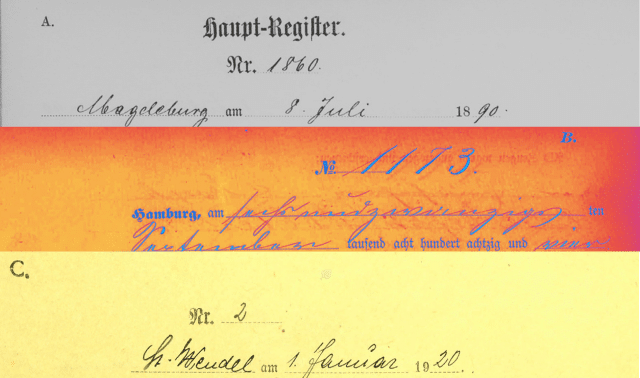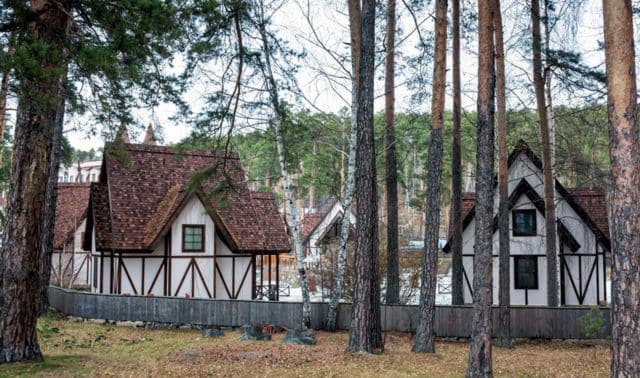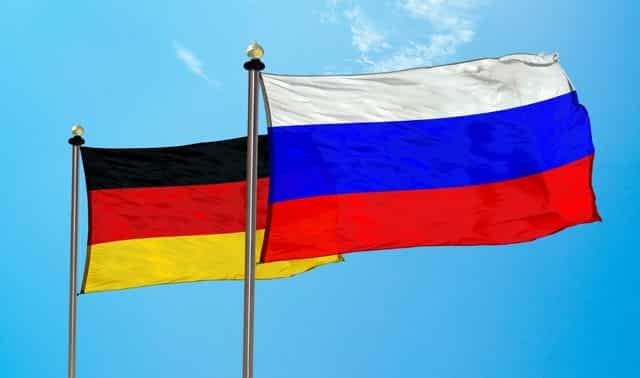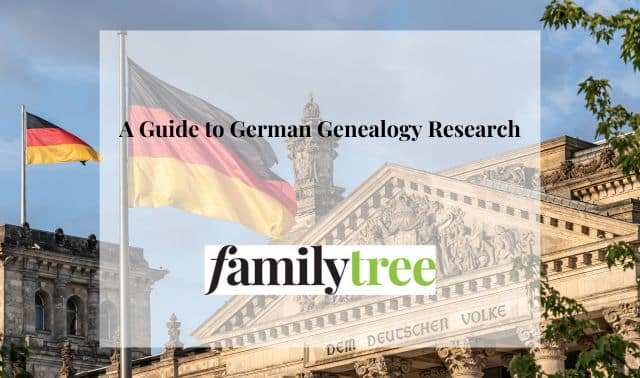Sign up for the Family Tree Newsletter! Plus, you’ll receive our 10 Essential Genealogy Research Forms PDF as a special thank you.
Get Your Free Genealogy Forms
"*" indicates required fields
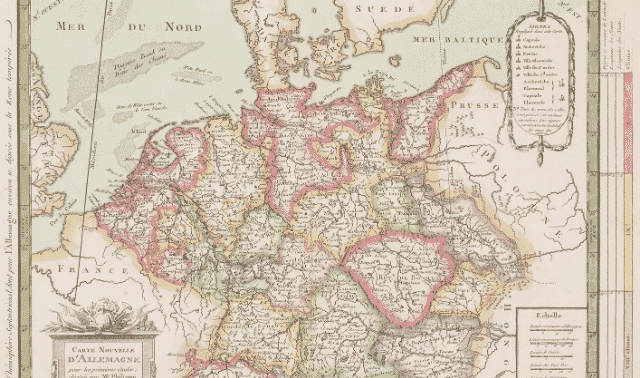
Your family says Great-grandpa Henry spoke German, but your research says he came from Russia. Or maybe a Deutscher forebear’s town is frustratingly absent from any map marked Germany. What’s a genealogist to do? Two words: Look east. That’s because Germany was a fatherland whose “children” included enclaves scattered throughout Central and Eastern Europe in areas that never were part of any German empire.
Occupants of these places were known by unmistakably German names such as Donauschwaben, Karpatendeutsche, Gottscheer and Siebenbürger Sachsen. They retained — in some cases for half a millennium or more — a sense of “German-ness” while surrounded by a variety of other peoples, including Hungarians, Slovenes, Romanians and Ukrainians. Wars (with resulting boundary changes and ethnic reshufflings) have rendered most of these German enclaves extinct in Central and Eastern Europe, but some groups have created new homes back in Germany or other parts of the world. Their descendants include hundreds of thousands of Americans. If you’re one, you might find yourself playing an ancestral game of tag, chasing your ancestors across Europe and around the globe. But we’re here to help you rein in those out-of-bounds relatives with advice for tracing Germans who didn’t live in Germany.
A moving story
The nation of Germany reached its largest peacetime size in 1871 with the birth of the Second Reich (Empire) under the Prussian king. For the first time, the hundreds of independent German states, ruled by kings, dukes, counts and electors, were united under a single leader. During the previous thousand years, only Charlemagne — as founder of the Holy Roman Empire, a national hero Germans call Karl der Grosse — had ruled the states with any more than loose control, and Prussia and Austria had spent centuries struggling for leadership. That turmoil left enclaves of people who were ethnically German scattered around Europe. Some enclaves date to the heart of the Middle Ages and were the first permanent settlements in their areas. But most owe their existence to two great German-speaking empresses of the 1700s, Maria Theresa of Austria and Catherine the Great of Russia.
ADVERTISEMENT
During her reign from 1740 to 1780, Maria Theresa — daughter of one Holy Roman Emperor, wife of another and mother of two more — heartily encouraged her subjects to emigrate from German-speaking states to the fringes of the Balkan Peninsula, recently won back from the Ottoman Turks. The resulting enclaves were in what we now call Slovakia, Romania, Serbia, Poland and Hungary.
Russia’s Catherine the Great was born to the ruler of a German state and married the future Russian czar Peter HI. (By some accounts, she had him murdered.) To populate land also acquired from the Ottoman Empire, she offered incentives to industrious German-speaking farmers and craftsmen who moved to Ukraine, Bessarabia, Crimea and the Volga River valley.
Once they’d moved to their enclaves, ethnic Germans tended to stay put until economic reasons prompted them to emigrate, in part because the Congress of Vienna redrew European boundaries after Napoleon fell in 1815. Just four rulers remained in Eastern Europe: Prussia, Russia, Austria and the Ottomans — today, nearly two dozen nations occupy the same area. Austria established a dual monarchy with Hungary in 1867; thereafter, Austria controlled some ethnic German enclaves while others fell under Hungary.
ADVERTISEMENT
Early in World War II, the population of what Adolf Hitler called Volksdeutsche (ethnic Germans, as opposed to Reichsdeutsche — imperial Germans already living within the Third Reich) was estimated at 10 million. The Nazis prompted a wave of resettlement as they tried to expand the population of their empire to include ethnic German enclaves, while “purifying” German-speaking groups that had mingled with surrounding ethnicities. Those plans failed for the most part, and many Volksdeutsche settlements dissolved in 1944 and 1945 as the occupants fled before the oncoming Russian Red Army. Governments eager to eliminate any German presence killed or exiled many who remained. Some groups refer to this as a diaspora (scattering) that sent them searching the globe for places to live.
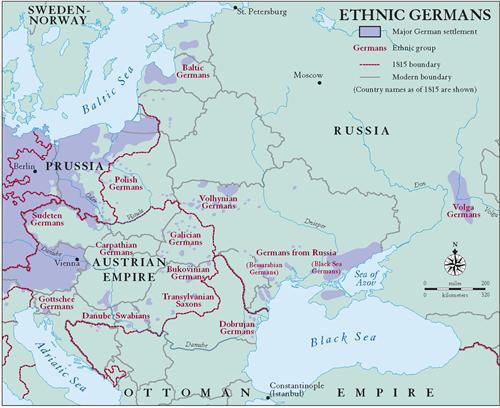
Deutsch documents
Only sparse records date back far enough to document the medieval pioneers’ migrations. But the colonists who did the bidding of their rulers in the 1700s are often traceable to villages in Germany, since most church records — especially baptism and marriage registers — and records of manumission (release from serfdom for legal emigration) survive. Church burial records from the enclaves may contain references to Western European villages of origin.
FamilySearch, the website of The Church of Jesus Christ of Latter-day Saints’ Family History Library (FHL) in Salt Lake City is your main source for church and other records. To see if the FHL has records of your ancestral village, use the online catalog to run a place search on the village name.
Church records from German enclaves will be in German; civil records will be in the language of the ruling nation, which might have changed one or more times while your ancestors lived there. The FamilySearch word lists can help — on the home page, click Guides, then Word List. Some of the Web sites you’ll consult are in German, too. You can get a serviceable translation using Google Language Tools: Just type the site’s URL into the Translate a Web Page field. You also can use the Search Specific Languages box to limit search results to English-language sites.
Not many towns still have old civil records such as birth and marriage certificates, but it’s worth a shot. Try contacting a genealogical society covering the area; members probably can tell you what records are available. An FHL catalog search on the town name might point you to published indexes. In most cases, you’ll request copies from the town clerk, so write a letter supplying what you know about your ancestor (it’s best to use the language of the country where you’re sending your letter; a local genealogical society likely can help with that, too).
Look for repositories’ contact information in Ancestors in German Archives edited by Raymond S. Wright III (Genealogical Publishing Co., $85), available in many libraries. Creative use of the FHL catalog can suggest more resources. For instance, a place search on your ancestor’s country or region might turn up a book with a typically long German title such as Bestandsverzeichnis der Abt. Deutschen Zentralstelle für Genealogie Leipzig im Sächsischen Staatsarchiv Leipzig (Inventory of Holdings of the German Central Office for Genealogy in Leipzig) by Martina Wermes, Renate Jude and Hans-Jürgen Voigt. Check the catalog entry and you’ll see this book lists records (including family pedigrees, personal writing and eulogies) of former German settlements in Bessarabia, Bukovina, Estonia, Latvia, Lithuania, Transylvania, the Sudetenland, Slovenia and Southern Tyrol — and it gives German Central Office for Genealogy microfilm holdings for towns in each area.
Major Ethnic German Groups
Following is an overview of the major ethnic German groups; we’ve also pointed out important records for each. For additional help and resources, explore the numerous websites, published histories and genealogical societies covering each group.
Deutschbalten (Baltic Germans)
Origin: Throughout Germany
Destination: The Baltic Sea’s eastern shore in three main areas: Estland, roughly the northern half of present-day Estonia, Livland in southern Estonia and northern Latvia, and Kurland (Courland in English), the southern half of present-day Latvia
Migration history: Baltic Germans were pioneers, settling their new land in the late 1100s. They founded an association of knights that became affiliated with the Teutonic Catholic order in 1236, and eventually morphed into an aristocracy that owned much of the Baltic states. Though Estonia and Latvia became provinces of the Russian Empire in the 1700s, the German-speaking aristocracy remained until after World War I, when the two states regained independence and redistributed their land. Some Deutschbalten left, mainly for America and Germany. Most stayed until 1939, when Estonia and Latvia again fell under Russian rule and nearly all the 70,000-plus German-speaking residents were sent to Poland, and later in the war, to Germany.
Records: The FHL has church records of many major towns, including Riga. Most start in the mid-1600s or early 1700s.
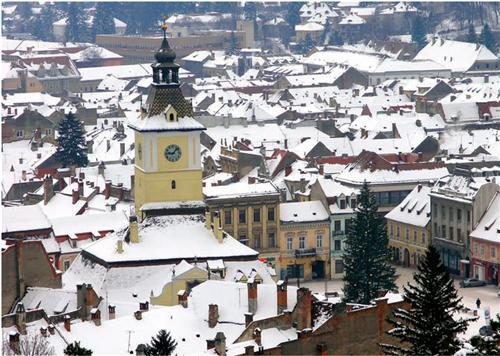
Bukovinans
Origin: Swabians came from the southwestern German states of the Palatinate, Württemberg and the Rhineland; Sudeten Germans, from the Bohemian Forest area; and Zipsers, from the district of Zips in what’s now Slovakia.
Destination: part of Bukovina, in Romania since World War I
Migration history: After Bukovina became an Austrian province in 1775, the government encouraged ethnic Germans to settle there. More Sudeten Germans followed during the early 1800s. A late-19th century population explosion spurred migration primarily to Canada, but also the United States and Brazil. The Soviet Union and Romania divided Bukovina after World War I, and in 1940, nearly all the Germans in Bukovina left for Germany proper.
Records: Fortunately, the migrants took along their Roman Catholic and Lutheran church records, which the FHL has microfilmed. Some date to original German settlement.
Karpatendeutsche (Carpathian Germans)
Origin: Several areas of Germany — see migration history below
Destination: The northern arc of the Carpathian Mountains (now in Slovakia and subject at the time to Hungary), including four areas: Pressburg (the German name for Bratislava), central Slovakia in the Hauerland, the Zips and the Carpatho-Ukraine (now called Transcarpathia)
Migration history: As early as the 12th century, a Bavarian bishop with extensive landholdings in Tyrol encouraged his subjects from the town of Eisacktal in South Tyrol to populate the village of Eisdorf in the Zips district. Germans who spoke a Bavarian-Franconian dialect went to Hauerland and Pressburg; those from the northwestern Lower Rhineland and Flanders ended up in the Zips.
After 1860, Zipser German peasants and craftsmen immigrated to the United States en masse, most notably to Philadelphia, though more than 150,000 Carpathian Germans still lived in Europe before World War II. The war left 6,000 to 15,000 in Slovakia and 3,000 in Ukraine. Descendants of this group reside mainly in Germany, Austria, the United States and Canada.
Records: Eisdorf and Menhard are among the few villages whose church records are on FHL microfilm.
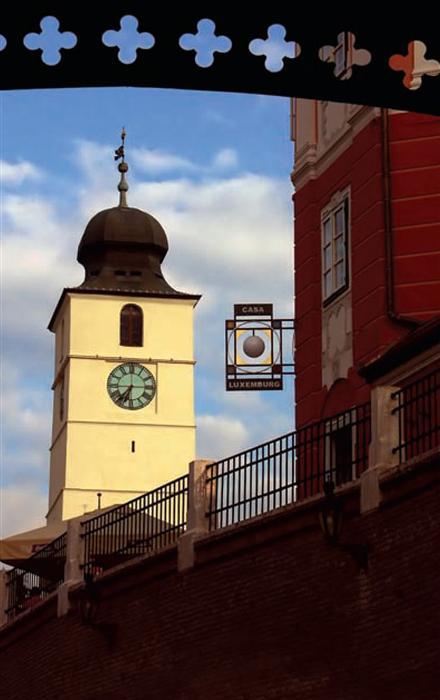
Donauschwaben (Danube Swabians)
Origin: Many came from the Swabian region centered around Stuttgart, Würt-temberg; others were miners and craftsmen from Styria (a province of modern-day Austria), Austrian military and civilian territorial administrators and office workers, and people from Carpathian areas and the Baden microstate of Durlach.
Destination: A number of prominent enclaves along the Danube River in what are now Hungary, Romania and Serbia
Migration history: The first of this large group to migrate were about 15,000 to an area known as the Banat, now in southwestern Romania, between 1718 and 1737. Ottoman raids and a bout with bubonic plague killed many of these settlers. The second colonization wave, from 1744 to 1772, consisted of 75,000 people and resulted in German-dominated towns throughout what’s now southern Hungary, Croatia and Serbia in regions called Batschka, Sathmar and Slavonia. A third wave added another 60,000 colonists — including more Protestants than in previous colonizations — during the 1780s. Most set out from the German city of Ulm and passed through Vienna and Budapest.
Before World War II, nearly half a million German speakers lived in the Banat alone. After the war, Hungary and Serbia (then part of Yugoslavia) expelled many of them. Meanwhile, 100,000 Donauschwaben left Romania ahead of the Russian army; some who stayed were sent to labor camps in Ukraine. Upon release, many left for Germany or Austria and later moved to the United States, Canada, Australia, France, Argentina, Brazil and Venezuela.
Records: Museums and ethnic clubs keep the Donauschwaben memory alive, and you can find numerous records of their journey. They include Ansiedlerakten (settler documents) dating from 1686 to 1855, which occupy 35 rolls of FHL microfilm. These records give settlers’ names, number of children, places of origin and other information recorded as they passed through Vienna. Many of these settlers and their descendants were conscripted into the Austro-Hungarian army, so check FHL microfilm of Austrian military records — search the online catalog on the keywords Austrian military.
Gottscheer
Origin: German states of Carinthia, Tyrol, Salzburg, Brixen and Freising
Destination: Gottschee, part of the Austrian duchy of Carniola (now in Slovenia)
Migration history: This group first settled vacant forest land in the 1300s. During World War II, the Nazis relocated them nearby; after the war, the Gottscheer were again expelled to the United States, Germany, Austria, Canada and Australia. Most of the 20,000 to 30,000 Gottscheer and their descendants in America arrived after the expulsions; but some came as early as 1870. Many live in large cities such as New York, Cleveland, Chicago and Milwaukee (and Toronto, Kitchener and Vancouver in Canada) as well as Upper St. Clair Township in Allegheny County, Pa.
Records: Roman Catholic church records dating to the 1700s are on microfilm; copies are available through the FHL.
Siebenbürger Sachsen (Transylvanian Saxons)
Origin: The Rhineland and the Mosel River region, the Eifel and Luxembourg
Destination: What was then Hungary, now the northern part of Romania
Migration history: The area these ethnic Germans settled also goes by Transylvania — the same place Dracula made famous. Don’t confuse them with the Carpathian Germans (it’s easy to do, since the Carpathian Mountains run to the east of Transylvania). In the 1100s, Hungary’s king invited the Transylvanian Saxons to farm and gave them autonomy to establish their own laws and justice system. Their enclave swelled to some 500 settlements, including the cities Hermannstadt (now called by its Romanian name, Sibiu), Kronstadt (Brasov) and Schäßburg (Sighisoara).
Many Transylvanian Saxons immigrated to America beginning in the 1880s, clustering around steel factories in cities such as Youngstown and Cleveland, Ohio, and Sharon and New Castle, Pa. All but a few thousand left after World War I, when Romania absorbed the area. The majority — some 200,000 — of post-WWII emigrants from here have returned to Germany. An estimated 30,000 to 40,000 Americans are their descendants, mostly from migration during the 1880s.
Records: The FHL has church records for many Transylvanian villages, but most date only from the early 1800s. Collections for some towns cover only registers of Austrian military families. You’ll find a variety of other FHL records, including the Conscriptio Czirakyana feudal land tenancy census of 1819 to 1820. (Run a catalog title search on Conscriptio Czirakyana.)
Volga Germans and Germans from Russia
Origin: Throughout Germany
Destination: Near the Volga River in southern European Russia
Migration history: These colonies (Catherine the Great’s first project) were the most prominent of the German-speaking enclaves established in the Russian Empire during the 18th and early 19th centuries.
Starting in 1763, about 30,000 colonists founded “closed cities” (only colonists could live there) on the Russian steppe; they remained until Communist Russia banished them to Kazakhstan and Siberia in 1941. You’ll find histories of several colonies, maps, photos and more at Germans from Russia.
Other groups — collectively called Germans from Russia — include isolated southern Russian settlements founded in the late 1760s; Hutterites, who first moved in 1770, and Mennonites, who began settlement by 1789; German towns in the Bessarabian and Black Sea regions starting in the early 1800s; and mid-19th century arrivals in Volhynia, Crimea and the Caucasus.
About 1.8 million Germans lived in Russia at the end of the 19th century. On the emigration side of the ledger, thousands of Mennonites began leaving for the Americas in the 1870s to avoid compulsory Russian military service. Stalin expelled Volgans as the German army advanced during World War II. The descendants of German-speaking Russian emigrants live all over the world, including Canada, the United States, Germany, Argentina and Brazil; some stayed in European Russia, Kazakhstan and Siberia.
Records: You can purchase Russian census lists covering various years from the mid-1700s through the mid-1800s from the American Historical Society of Germans from Russia. The organization also has a network of village genealogy coordinators to help researchers communicate. Church records are mostly unavailable, but you’ll find bright spots: For example, Lutheran Germans expelled from Bessarabia during World War II saved their church records; they’re on FHL microfilm.
Pinpointing places
For families of post-WWII emigrants from Germanic enclaves, determining a place of origin in Europe is usually pretty easy, since many emigrants are around to talk about their pre-diaspora lives. But remember, they may have seen traumatic times and be reluctant to relate some details. Likewise, realize some of these people are extremely passionate about the loss of ancestral lands.
If you can’t get a first-person account, turn to documents such as passenger lists, naturalization papers and US census schedules. For help using immigration records, see the August 2004 Family Tree Magazine. Census records are available on microfilm at National Archives and Records Administration facilities, the FHL, FHCs and most large libraries; you can search them online with a subscription to Ancestry.com or free at some libraries. Your primary complication will be analyzing the person’s nationality, since a German-speaking immigrant may be listed as Austrian, Hungarian or Russian. In census records, the language may tip you off: If a Hungarian or Russian spoke German, he likely came from a German enclave. Find out the religion of an Austrian relative — most of Austria’s German enclaves were Protestant, while Germans of the Austrian heartland were almost uniformly Roman Catholic.
The FHL catalogs records by the village name when they were created, which could present a challenge: Eastern European villages often have different names in different languages, and switched names as their rulers changed. Look for gazetteers and other research aids, such as the Society for German Genealogy in Eastern Europe‘s historical maps of Poland and northwestern Ukraine.
The version of tag you played with Susie in third grade was probably a lot more fun than trying to catch up with your German-speaking ancestors. But we guarantee that finally finding your wandering family’s whereabouts will prove way more satisfying.
Playing Ancestor Tag
With the confusion of boundary changes and languages, pinpointing the location of records for German-speakers who lived outside Germany isn’t always a straightforward task. We recommend taking a step-by-step approach, similar to this one:
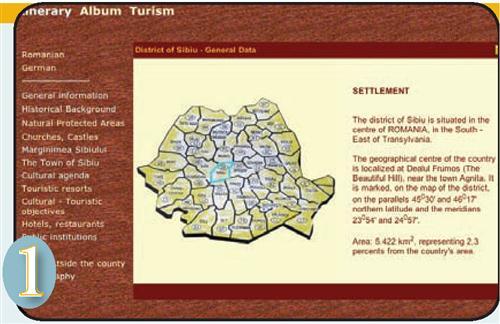
1. You’ve found a great-grandfather whose 1880s naturalization papers show his residence in Europe as Hermannstadt, Austria-Hungary — but where is that town today? A Google search done in December 2006 on hermannstadt brought up the Sibiu home page. Fortunately, the site had an English version, which explains the town Sibiu, in the district of Sibiu, is situated in the center of Romania (southeastern Transylvania). It’s the Romanian name for what Germans call Hermannstadt.
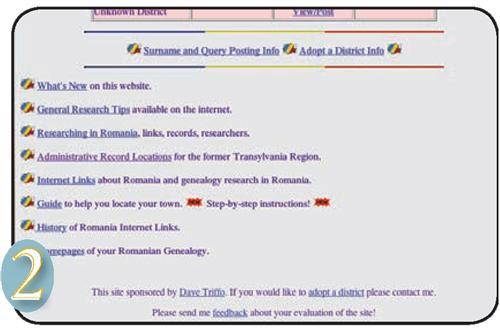
2. The history section of Sibiu’s Web site confirms this part of Romania was once in Austria-Hungary (until World War I, according to Wikipedia). Since Romania now has jurisdiction, that country will hold civil registrations — a visit to Romania GenWeb is in order. Clicking on Administrative Record Locations delivers the history of the region and contact information for the Sibiu district. This is where to send a letter asking about available records.
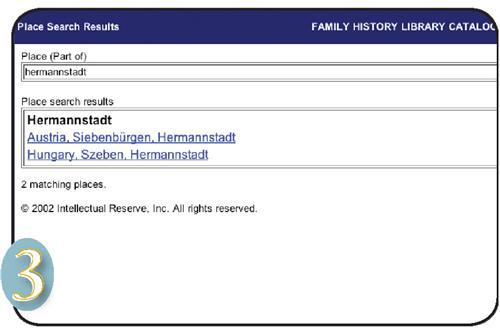
3. Next, place searches of the Family History Library online catalog on hermannstadt and sibiu show listings under both Austria and Hungary for Hermannstadt, and Romania for Sibiu. The actual records turn out to be the same — church registers of military personnel stationed in the area. Exploring the Hungary listings reveals the wrinkle that in Hungarian, Hermannstadt/Sibiu was called Nagy-Szeben, and its district, Szeben (worth noting in case that name pops up in later research).
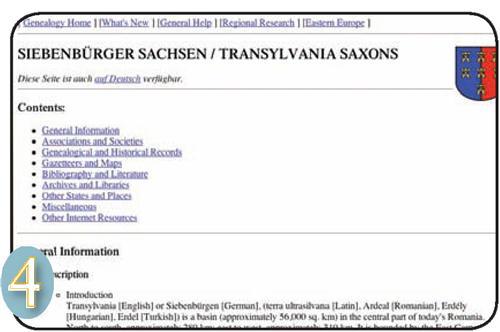
4. The FHL catalog’s Austria references give Siebenbürgen as the German name for the district where Hermannstadt/Sibiu/Nagy-Szebenlies. A Google in December 2006 search turned up the Siebenburgen Sachsen page, which was full of detailed historical information, links to societies and other resources, archive addresses and a book list — plenty to stay busy with.
Germany Ethnic Groups Genealogy Websites and Resources
Websites
- Baltic Germans Today (Deutschbalten Heute)
- Carpathian German Home Page
- David Dreyer’s Ship Extraction Database
- Donauschwaben Research Exchange You’ll need a free registration to use this site.
- German Genealogy Home Page Click Regional for links to resources for researching Germans who lived outside Germany.
- Gottschee
- JewishGen Communities
- Kartenmeister This gazetteer covers the provinces of East Prussia (including Memel), West Prussia, Brandenburg, Posen, Pomerania and Silesia.
- Odessa: German-Russian Digital Genealogical Library
- Volga Germans
Books
- Genealogical Guide to German Ancestors from East Germany and Eastern Europe, English edition, by Arbeitsgemeinschaft Ostdeutscher Familienforscher (Verlag Degener & Co., out of print)
- Germanic Genealogy: A Guide to Worldwide Sources and Migration Patterns by Edward R. Brandt (Germanic Genealogy Society, out of print)
- German Towns in Slovakia and Upper Hungary, 3rd edition, by Duncan Gardiner (self-published, out of print)
- Österreichisch-Ungarisches Orts-Lexikon (Gazetteer for the Austro-Hungarian Empire) by Hans Mayerhofer (Carl Fromme, out of print): Available on FHL microfilm 1256324.
- Tracing Romania’s Heterogeneous German Minority from Its Origins to the Diaspora by Jacob Steigerwald (Translation and Interpretation Services, out of print)
- Reisehandbuch Siebenbürgen (Travel Handbook of Transylvania) by Heinz Heltmann and Gustav Servatius (Kraft Verlag, out of print): Includes a village index.
- Wandering Volhynians magazine (out of print, see this page for an index)
Organizations and Archives
- American Historical Society of Germans from Russia 601 D St., Lincoln, NE 68502, (402) 474-3363
- Bukovina Society of the Americas P.O. Box 81, Ellis, KS 67637
- Danube Cultural Society of Southeastern Wisconsin 3575 S. Rivershire Drive, Apt. 1, Greenfield, Wl 53228
- German Central Office for Genealogy (Deutsche Zentralstelle für Genealogie) Sächsisches Staatsarchiv Leipzig, Abt. Deutsche Zentralstelle für Genealogie, Schongauer Strasse 1, D-04329 Leipzig, Germany
- Federation of East European Family History Societies P.O. Box 341 Payson, Utah 84651 <feefhs.org>
- Gottscheer Heritage and Genealogy Association P.O. Box 725, Louisville, CO 80027
- Homeland Association for Carpathian Germans in Germany (Karpatendeutsche Landsmannschaft) Haus der Heimat, Schloss-strasse 92/II, D-70176 Stuttgart, Germany
- Institute for Danube-Swabian History and Regional Studies (Institut für Donauschwabische Geschichte und Landeskunde) Mohlstrasse 18, D-72074 Tubingen, Germany
- Society for German Genealogy in Eastern Europe P.O. Box 905 Station M, Calgary, Alberta T2P 2J6, Canada
- Working Group of DanubeSwabian Genealogists (Arbeitskreis Donauschwäbischer Familienforscher) Goldmühlestrasse 30, D-71065 Sindelfingen, Germany
- Working Group of Eastern German Genealogists (ArbeitsgemeinschaftOstdeutscher Familienforscher) Fuhrweg 29, D-53229 Bonn, Germany
A version of this article appeared in the December 2006 issue of Family Tree Magazine.
ADVERTISEMENT

